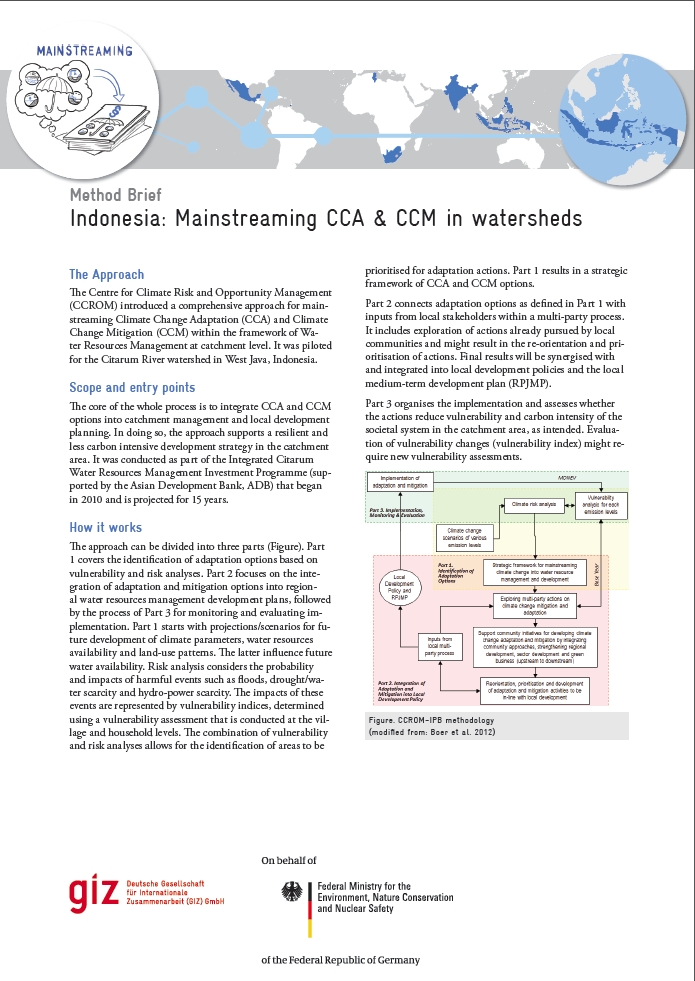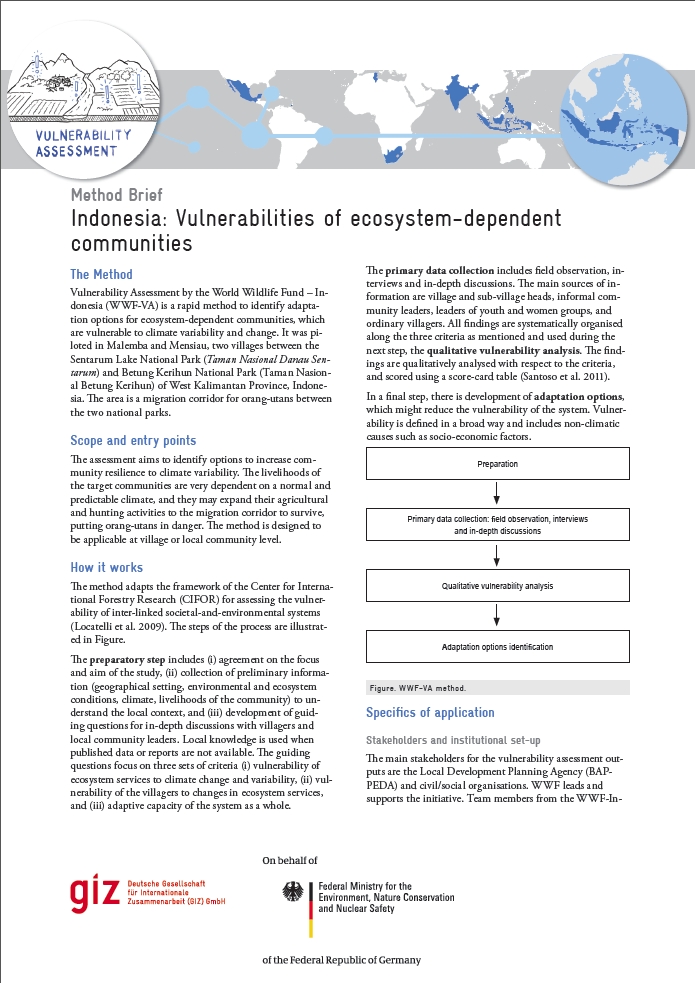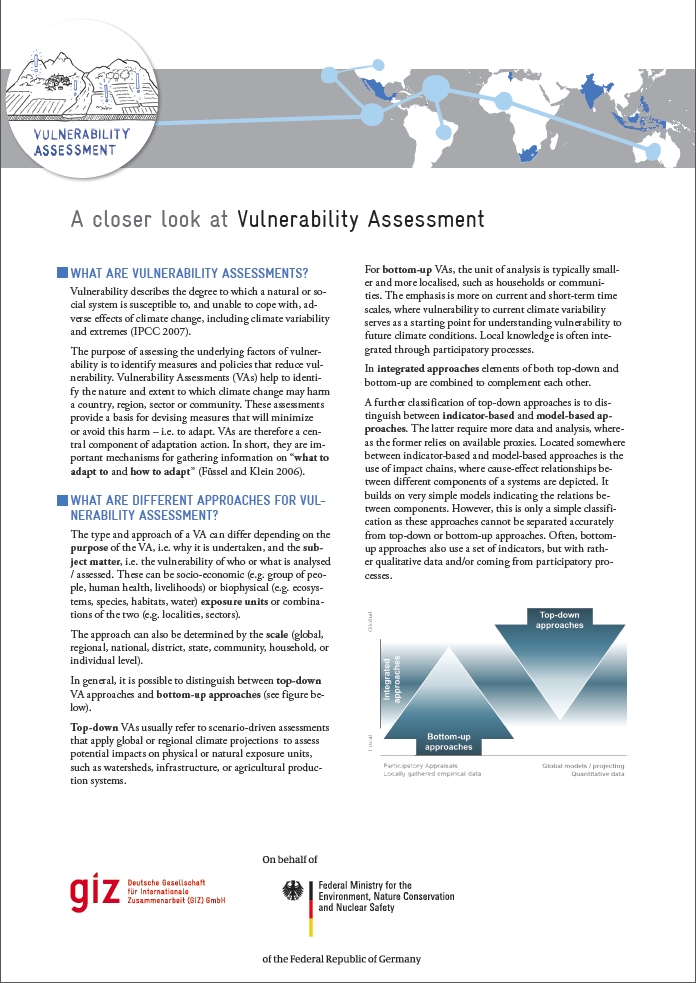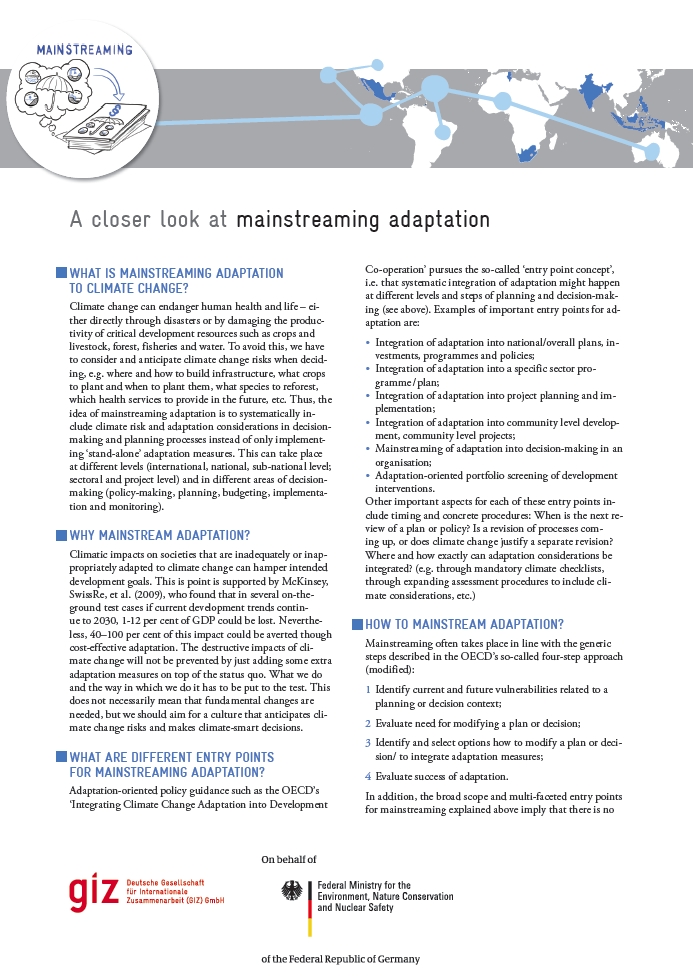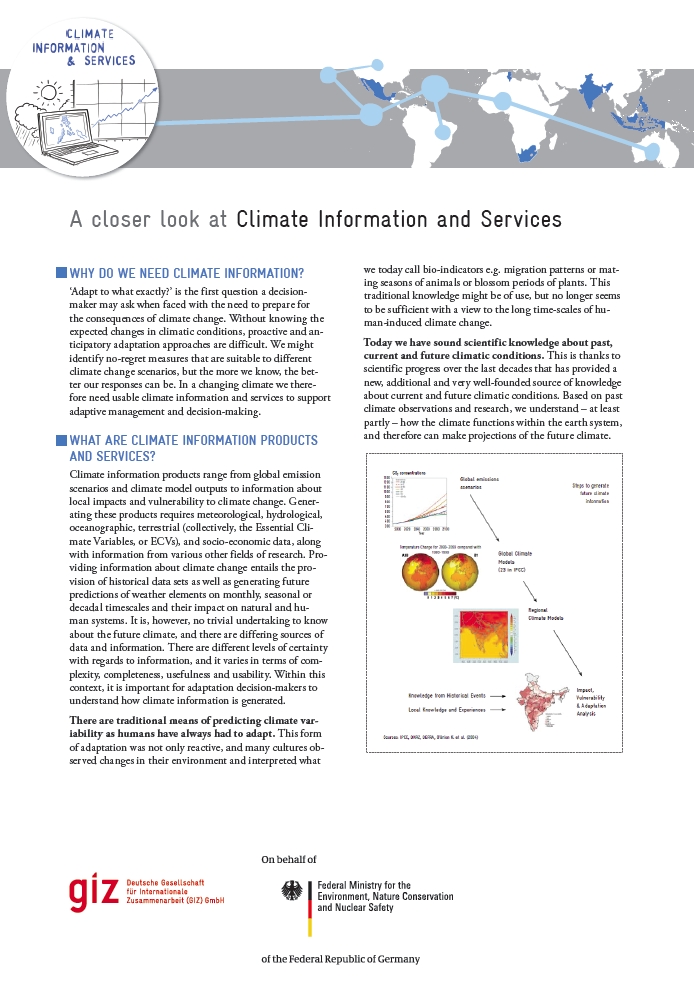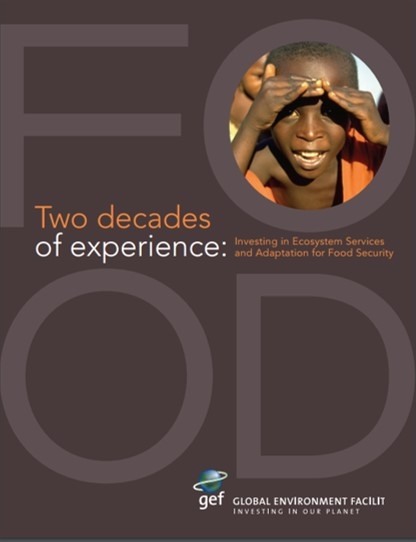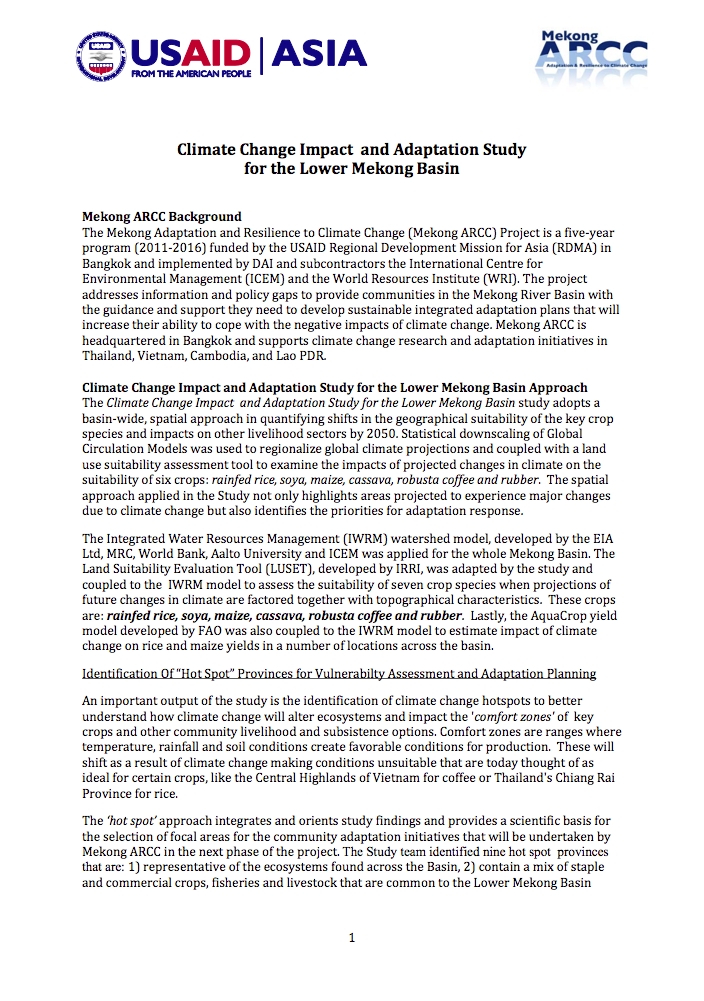Harvested Publications
The "Redraw The Line" climate change awareness campaign, the No Impact Project and the Asia-Pacific Media Alliance for Social Awareness are holding a series of one-day seminars around Asia on “Building Critical Mass Awareness of Climate Change - Engaging Media, Advertising and Entertainment Sectors”. The events aim to stimulate dialogue and cooperation between different sectors in addressing climate change. Objectives The events aim to stimulate dialogue and cooperation in mitigating and adapting to climate change through multi-sector partnerships between different…
The Approach The Centre for Climate Risk and Opportunity Management (CCROM) introduced a comprehensive approach for mainstreaming Climate Change Adaptation (CCA) and Climate Change Mitigation (CCM) within the framework of Water Resources Management at catchment level. It was piloted for the Citarum River watershed in West Java, Indonesia. Scope and entry points The core of the whole process is to integrate CCA and CCM options into catchment management and local development planning. In doing so, the approach supports a resilient…
The Method Vulnerability Assessment by the World Wildlife Fund – Indonesia (WWF-VA) is a rapid method to identify adaptation options for ecosystem-dependent communities, which are vulnerable to climate variability and change. It was piloted in Malemba and Mensiau, two villages between the Sentarum Lake National Park (Taman Nasional Danau Sentarum) and Betung Kerihun National Park (Taman Nasional Betung Kerihun) of West Kalimantan Province, Indonesia. The area is a migration corridor for orang-utans between the two national parks. Scope and entry…
What are Vulnerability Assessments? Vulnerability describes the degree to which a natural or social system is susceptible to, and unable to cope with, adverse effects of climate change, including climate variability and extremes (IPCC 2007). The purpose of assessing the underlying factors of vulnerability is to identify measures and policies that reduce vulnerability. Vulnerability Assessments (VAs) help to identify the nature and extent to which climate change may harm a country, region, sector or community. These assessments provide a basis…
What is mainstreaming adaptation to climate change? Climate change can endanger human health and life – either directly through disasters or by damaging the productivity of critical development resources such as crops and livestock, forest, fisheries, and water. To avoid this, we have to consider and anticipate climate change risks when deciding, e.g. where and how to build infrastructure, what crops to plant and when to plant them, what species to reforest, which health services to provide in the future,…
Adaptation monitoring and evaluation (M&E) assesses whether adaptation measures have achieved their desired results and whether resources have been used efficiently and effectively. M&E can ensure accountability, which is particularly important in the context of climate finance. In addition, adaptation M&E can also support project and programme management under uncertainty and facilitate learning about what does and does not work, and why. The learning aspect is particularly important as adaptation is still a relatively new policy field. The core question…
Why do we need climate information? ‘Adapt to what exactly?’ is the first question a decisionmaker may ask when faced with the need to prepare for the consequences of climate change. Without knowing the expected changes in climatic conditions, proactive and anticipatory adaptation approaches are difficult. We might identify no-regret measures that are suitable to different climate change scenarios, but the more we know, the better our responses can be. In a changing climate we, therefore, need usable climate information…
The GEF has been playing an invaluable role in supporting developing countries to pioneer practices that introduce sustainability and resilience features into agriculture and food security investments. To illustrate the types of solutions and interventions the GEF has been championing, this publication offers a succinct overview of the investments already made in maintaining ecosystem service flows and securing the resiliency for food systems throughout the developing world.
The study adopts a basin-wide, spatial approach in quantifying shifts in the geographical suitability of the key crop species and impacts on other livelihood sectors by 2050. Statistical downscaling of Global Circulation Models were used to regionalize global climate projections and coupled with a land use suitability assessment tool to examine the impacts of projected changes in climate on the suitability of six crops: rainfed rice, soya, maize, cassava, robusta coffee, and rubber. The spatial approach applied in the Study…
The book is based on results of an expert group meeting on “Population Dynamics and Climate Change II: Building for Adaptation,” which was held at El Colegio de México in Mexico City, Mexico, in October 2010. It provides key concepts linking demography and adaptation, along with case studies showing how census data and other demographic information can be used for analyzing climate vulnerability and resilience. In their introduction, the editors emphasize that analysis of population features and dynamics can be a…


